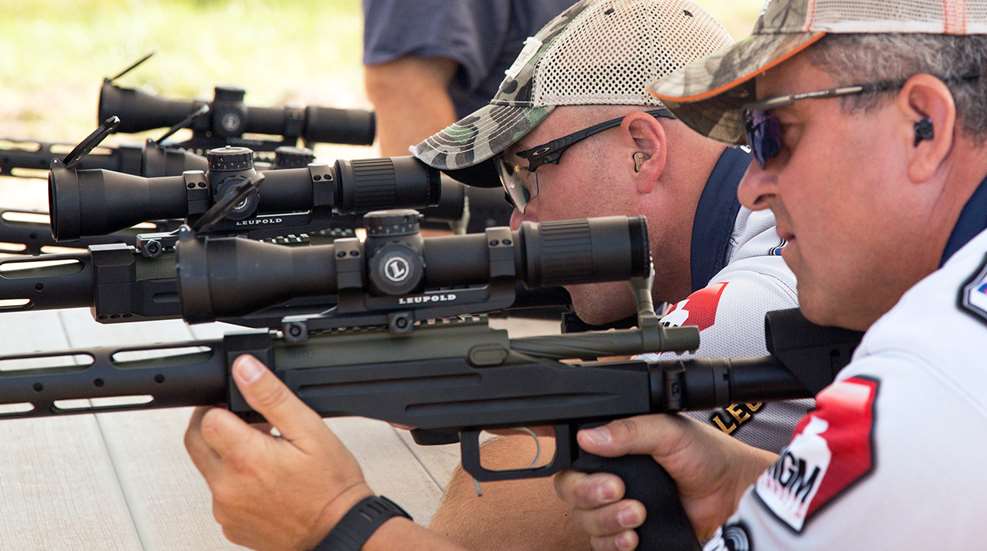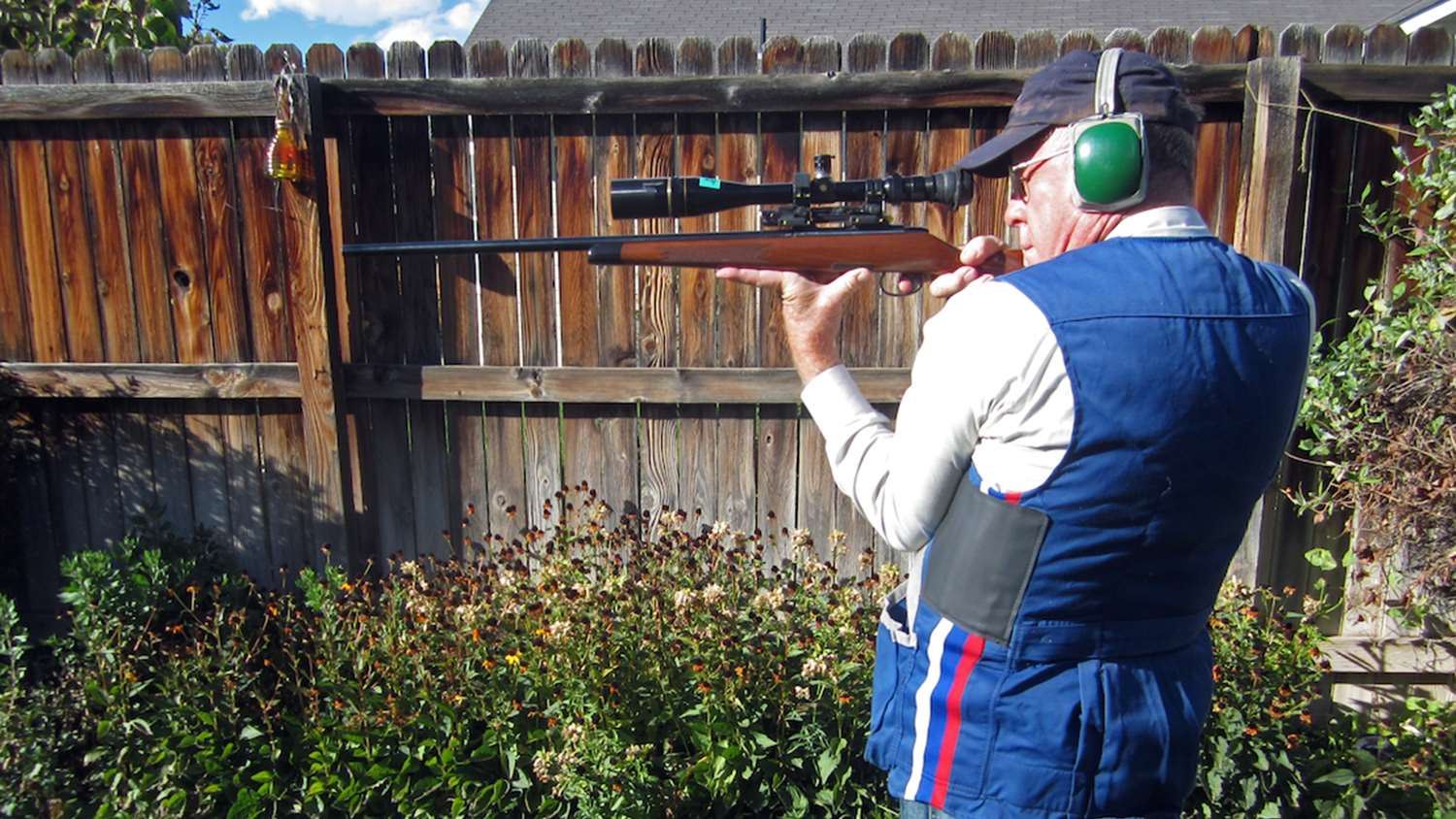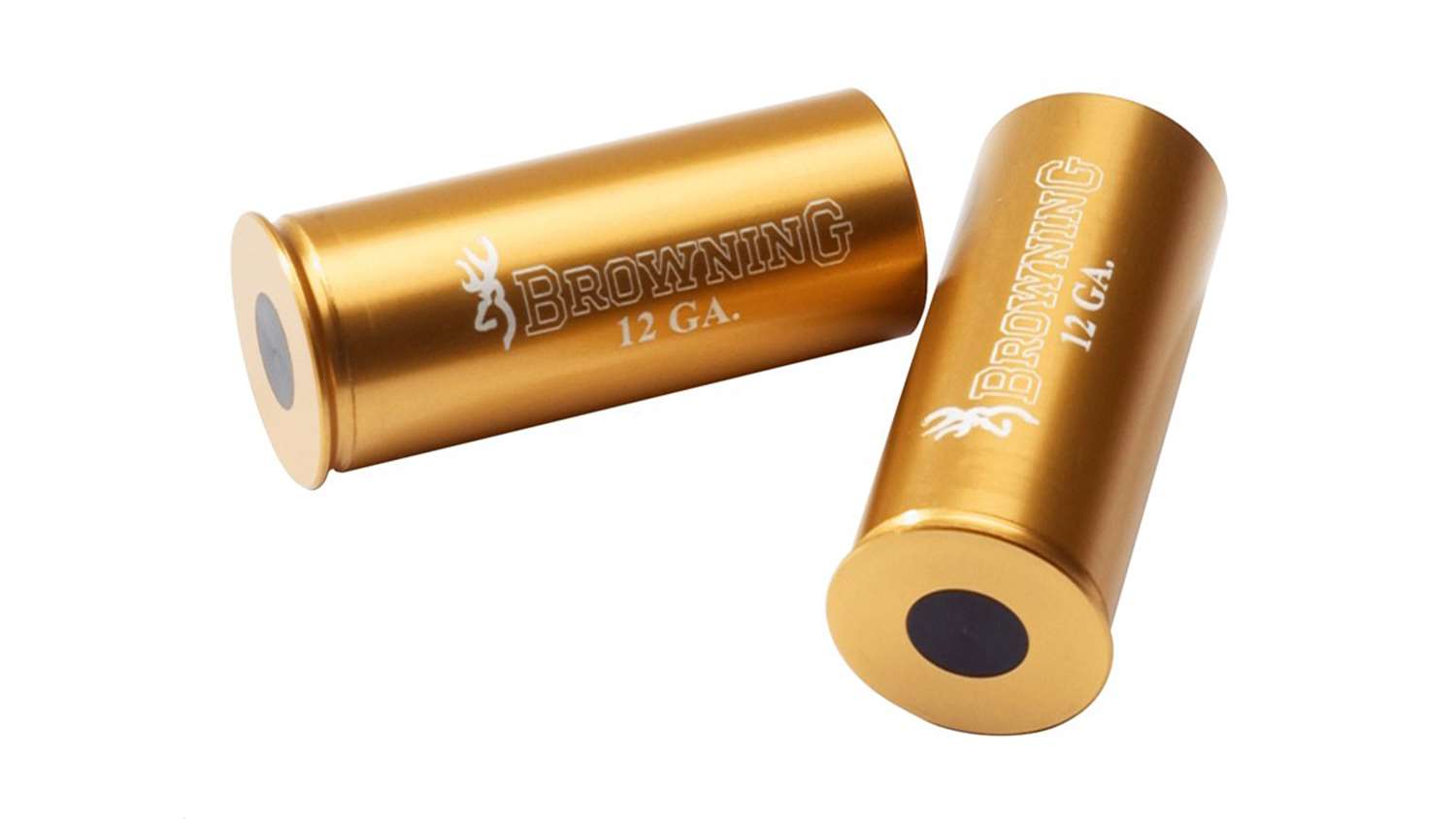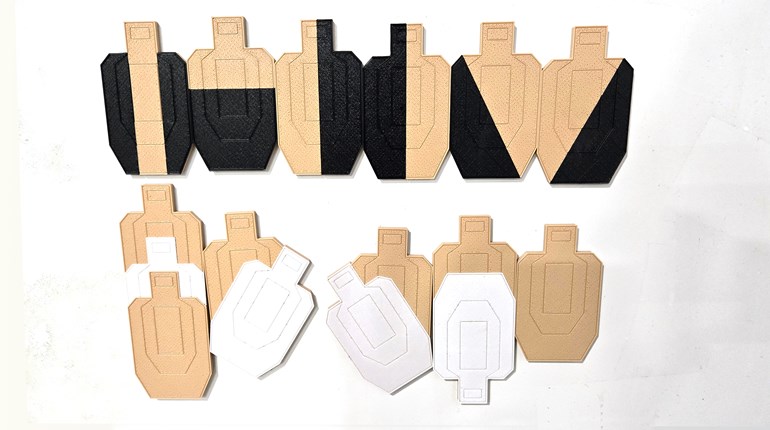
Editor’s note: If you haven’t already, be sure to read Part 1 of “Why Dry Fire?” where we introduced the subject and also went over pistol fundamentals.
Rifles
Dry firing these guns falls under the same suggestion that you practice exactly as you shoot in competition. First, get your position correct so your natural point of aim is where you want it. Mount the rifle correctly, adjust your natural point of aim (if allowed in a match). Then pull the stock into your shoulder the same way with the same pressure each time, align the sight correctly, breathe your pattern as you would and carefully snap the shot in the same time frame you would in competition.

Back when I was competing in the National Match Course I needed a lot of dry firing to move up from Sharpshooter to Master—the highest level at that time. But how to function the action of what was then the most popular rifle, the Springfield M1A, for sitting and prone rapid fire timed portions of the match course? First, I set up 200- and 300-yard proportionally reduced targets in our living room. Then I put on all the gear I would wear (two sweat shirts, shooting jacket, shooting pants, boots, shooting glove, hat, shooting glasses), then snap in with the sling.
I would load a quarter dollar into each magazine I used in competition. The quarter will depress the follower so that the bolt will pass over it, allowing for “repeat shots.” This can also be done by inserting a nickel into the magazines of the AR family. Then I tied a 6-foot length of nylon 550 cord to the cocking handle of the M1A. With stop watch in place on the shooting mat I would under time go into the shooting position and begin to fire my 2-shot string, reload and fire my 8-shot strings of empty trigger snapping.
Each time the hammer hit the firing pin, my wife would pull smartly on the 550 cord passed just over my shoulder. Her doing this would pull the bolt to the rear, re-cock the rifle as the quarter loaded magazine allowed the bolt to go into battery for the next “shot.” Pulling the 550 cord would add a bit of “recoil” enough to disturb my sight picture, so I had to require it just like in the real world. This worked great and in competition I would finish out consistently within three seconds of the allowed time. Keeping this cooked-up system of mine a secret—I sure feel it helped me do pretty well over the course and got my Distinguished Rifleman in three weeks as a Sharpshooter. I earned NRA Master the next year—then I discovered high power rifle metallic silhouette.
Regardless of what you are shooting, keep it all consistent with how you actually compete or this is just a waste of time. It sure saves on ammunition!
Shotguns (Trap, skeet and sporting clays)
This can be a bit more complicated but it can be simplified some. Years ago, I followed some of the world’s top two sporting clay shooters at the first major clays match in the United States. Not being a shotgun shooter then or now, I asked them and a few national champion trap shooters how they dry fire practice—or if they even do. Boy, do they! They all told me it was pretty simple, but that they do it a lot.

They told me to practice mounting the gun smoothly and correctly. Another tip they shared was to go indoors, mount the gun and follow a tile line (if there is one) on the ceiling. This can also be done by putting a 6- to 8-foot long strip of ¼-inch wide tape on the ceiling or wall (for sporting clays “bunny” target). Then practice mounting and smoothly tracking on the tape. During this sweep you could snap the empty chamber (or have a dummy round in place) and improve your follow through. The benefit is learning how to quickly and smoothly mount the gun and then effectively follow a smooth line for the shot—I tried it and it really worked for me in dove hunting. They also told me they do not use or even look at the front sight—just not enough time and using the sight will slow down the sweep and affect that vital follow through after the shot is fired.
The pros also mentioned they use what they call “soft eyes.” They do not focus hard on the end of the gun or target, rather they sort of generally view it “softly” and break the shot. Sounds strange, but then what do world champions know about shooting?
An interesting thing they also told me is that clays skeet and trap shooting may hurt the effectiveness of some folks when game hunting. I asked why and the answer was interesting. In trap, skeet and clays the target is actually slowing down during flight. When hunting, the target is speeding up to get away during flight. Therefore, the ability to quickly and effectively mount the gun sweep, fire and carry correct follow though is critical in both target and hunting.
Summary
Many shooters will spend thousands on a gun, nifty sights then buy all the support stuff, such as good ammo (if they want to win). Then they will pay an entry fee, go to a match some distance away (maybe overnight), and get clobbered all the time. The reason is simple—“weekend shooters” are just not going to win much or do real well—especially at big matches. Take a tip from professional golfing. The pros who win or do well, usually hit 300-600 balls daily on the driving range. Top shooters dry fire tens of thousands of shots a year.
For the shooters who do not put in the time and work to get better and get stomped into the mud at matches—I say quit complaining and start working if they want to be competitive. I can assure you the consistent winners are putting in the time, the work and the practice to get and stay better—this is not magic. Shooting is a very perishable skill—regardless of level, ya gotta keep at it. The harder you work and the more you practice—the luckier you will get.


































